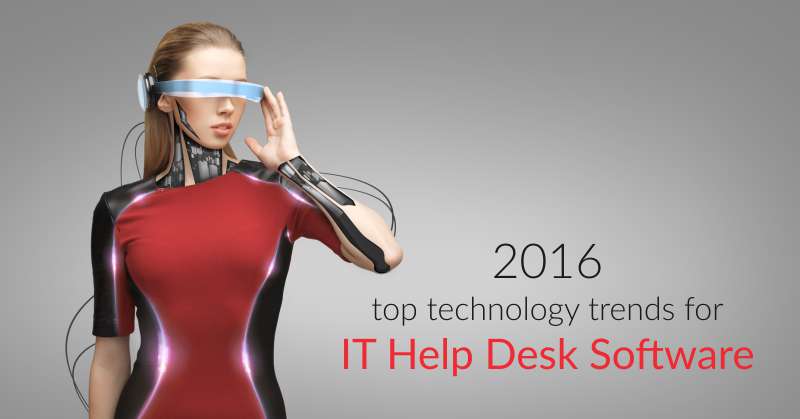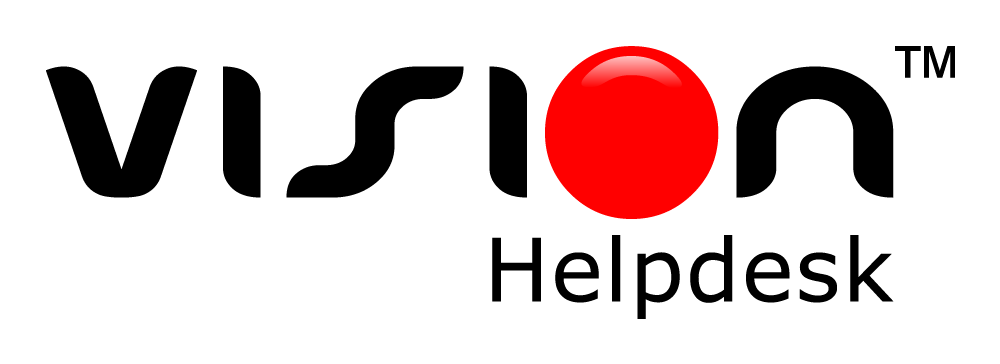
Technology is getting exponentially faster and intuitive. As technology changes, the way we live also changes. According to a report from UK based market research, we can expect to be surrounded by virtual reality to a great extent in the year 2016.
Today, IT organizations and help desk software are experiencing a dramatic shift in the way technologies are being developed and deployed. User expectations are not far behind, and new generations of tech-savvy users are expecting latest and greatest help desk applications. Applications are evolving with new cloud-based solutions to replace on-premises solutions of past generation. The result is a constantly evolving set of technologies that companies must support without increasing the costs.
User satisfaction is at forefront, as new technologies are enabling more efficient communication. IT support services are tasked to be even quicker on their feet due to technology trends like –cloud computing, BYOD (Bring Your Own Device) and mobility. Help desk professionals need to find new ways to manage data security, privacy, and storage and simply keep up with the constant flow of new devices, in order to compensate the new technology trends. Below is the detailed look at how these trends are affecting the IT help desk and what it means for IT support professionals.
Cloud Computing
The main mantra for IT has always been providing faster and better solutions at cheap rates. Software as a Service (SaaS) is a cloud-based software that is delivering on this promise. Improvements in underlying infrastructure have solved a number of scaling and up-time issues that plagues SaaS solutions in the past, which is turning them into go-to-delivery method for customer support. Cloud based solutions have many advantages over on-premises solutions, some of which are –
- Inexpensive deployment
- Easy access of data, even from mobile devices
- Less maintenance costs, as there is no hardware
- Seamless updates and fewer issues with data security
- Convenient and affordable
Today, many large companies are planning to switch to the cloud from on-premises solutions knowing that IT departments will outsource data security, maintenance and upgrades to software providers. As cloud has become industry standard, Help Desk employees should be ready to support a broad range of applications that need less technical involvement in day-to-day operations. The IT Help Desk will become first line of support, when things go wrong. The good thing is that users won’t know who own the resources. All they know is that they need instant help and they don’t care about the gaps between data-on-cloud and data-on-premises. For further clarity please take a look at comprehensive comparison between SaaS help desk software vs on-premises help desk.
Multi-Channel Support
Today, customers expect to communicate with companies directly over multiple channels like – online chat, social media, phone, email etc. They want to combine all these channels, such as establishing a first contact on social sites and then following up via email. This kind of multi-channel communication environment made help desk software an essential to track customer interactions.Companies must respond to and keep track of email, text, apps, live chat and other interactions. The cost for technology increases exponentially and the company budget tends to remain tight. Companies need to invest in technology to get a snapshot of customer’s channel history, as customers don’t like to repeatedly explain their issue.
Earlier, IT departments used to have only a few set of devices to worry about. Today, organizations are struggling with the blurry lines imposed by other devices like – smartphones, tablets and wearable gadgets. As web continues to grow, the list of IT devices could grow as well. IT companies will need operations that are much more centralized and easy to manage. Not only the IT solutions can be deployed rapidly, but can be managed and troubleshoot easily with centralized dashboard that connects multiple channels.
Self-Service Portals
Customers no longer want to talk to someone on phone to resolve their issues. They want to be taken care of themselves. Support organizations are learning that it is no longer easy to dictate how users will receive service. Self-Service has become a common part and users expect resources that help them solve their queries on their own. Providing online communities, knowledge bases and FAQs are the best ways to provide round the clock support. Community forums are growing in popularity, and instead of approaching customer support for help, customers are asking one another and solving their queries.
Technology to enhance the experience of customer is not sufficient unless it is personalized. Customers are pleased when they call a company and the company anticipates their inquiry. However, employing new technology to enhance customer experience will become a new norm, and saves a lot of time for both the organization and the customer. IT companies should implement new help desk systems to integrate relevant discussion forms and user communities.
Wearable technology and voice recognition on rise
Wearable technology will allow retailers to provide a high level service based on the requirements of individual consumers. Despite of tremendous privacy concerns, consumers regard this technology as must-have. Besides this, wearable also allow companies to recognize loyal customers and reward them with incentives. If there is a positive impact on relationship between company and consumer, the company responds in a positive way to use the data provided by consumer.
Speech technology is going to be perfected and seeking advice through spoken language will become the norm. Companies need to invest more in these technologies, especially,if these trends are coupled with sophistication of artificial intelligence.
Mobility
The proliferation of mobile devices and Wi-Fi networks allow employees to work beyond the confines of traditional offices. Due to this, the help desk is experiencing more challenges when managing tasks and controlling assets. For many large organizations, mobility has tripled the number of physical assets under the control of IT service management.
The best way to control the rapid use of mobile devices and gadgets is to deploy a specialized technical team within the company to centralize all the mobile devices and ensure a secure integration. The main job of the enterprise is to allow users to connect and collaborate in a secured environment without limiting their freedom.
Conclusion
The bottom line is that IT companies need an agile team that is willing to adopt new technologies and take necessary measures to serve customers in a better way. Cloud computing, multi-channel support and self-service are the top trends that affect the IT help desk in 2016. As more companies embrace cloud services and visualization, many IT help desk roles will change. IT should no longer operate or consider itself as cost-center.
The technical support teams will help organizations to find new ways to use technology and streamline their operations. However, the technical support team needs to stay up to date on current technology trend to do all the above things. The majority of skills needed for good quality technical support are not just technical skills, but interpersonal skills. This shows that the focus is more on Help Desk services rather than technical support.
Vision Helpdesk: Simplify Your Life
signup for 30 days free trial.. no credit card.. no obligation

Join the conversation